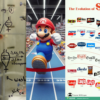How to optimize your scope of patent protection? – The Usage of Product Names or Trademarks in Claims
IP-Managers in large international companies often find that the grant rates of their patents are significantly higher in their own jurisdiction than in other jurisdictions. One of the reasons for this effect is that the patent applications are drafted taking into account the requirements of only one jurisdiction.
Drafting patent applications is a challenging task anyway, but it becomes even more difficult if the requirements of different jurisdictions should be considered. A drafting style working for one jurisdiction may cause major problems in other jurisdictions. Many problems could be avoided if they were considered at the drafting stage.
I will show periodically examples of problems caused by drafting or prosecution weaknesses resulting in rejections or narrow claims. The examples are taken from real cases, with the original wording changed to focus only on the key issue.
Today’s example relates to: The Usage of Product Names or Trademarks in Claims
Example claim:
“A method implemented on a compute platform configured to run software including Trademark/ProductName-Software, comprising:
Generating A in the Trademark/ProductName-Software based on B; and
Generating C based on A.”
The specification does not provide any general description of the functionality of the “Trademark/ProductName”-Software.
Problem:
At the EPO, such claim wording always causes clarity objections under Art. 84 EPC, which are based on Part F – Chapter IV 4.8 of the Guidelines for Examination:
“The use of trade marks and similar expressions in claims is not allowed as it does not guarantee that the product or feature referred to is not modified while maintaining its name during the term of the patent.”
Also software is altered over time and functionalities are added or deleted.
Consequently, the scope of protection of such a claim would vary over time.
It is almost impossible to overcome such a clarity objection if no additional definitions are provided in the patent application.
So the question is: How can such a situation be avoided?
Solution:
Rather than claiming a particular “Trademark/ProductName”-Software, it is essential to analyze the functionalities that this “Trademark/ProductName”-Software provides that are crucial to the invention. Based on this analysis, the claim should be directed towards a generic software that provides these identified functionalities.
Summary:
Although such a claim may work in one jurisdiction (e.g. at the USPTO), it causes major problems at the EPO (or at the German PTO).
In order to achieve high grant rates in all relevant jurisdictions, IP-Managers should take care that the requirements of all these jurisdictions are considered by their drafting attorneys at the drafting stage.
Drafting guidelines are a good way of ensuring high-quality applications that are suitable for all jurisdictions relevant to a company.
About the blogpost author:
 Stefan Müller is partner at 2SPL PartG mbB since 2012 and an expert for the protection of digital solutions in Europe. Before becoming a patent attorney, he studied physics and gained practical experience in the semiconductor industry.
Stefan Müller is partner at 2SPL PartG mbB since 2012 and an expert for the protection of digital solutions in Europe. Before becoming a patent attorney, he studied physics and gained practical experience in the semiconductor industry.
Feel free to connect with him on LinkedIn.



